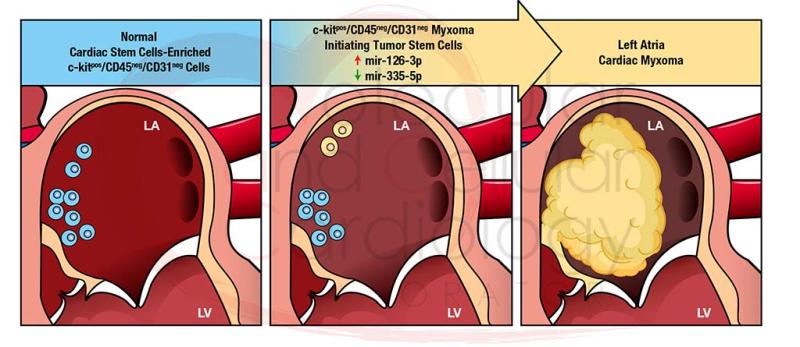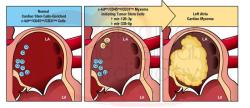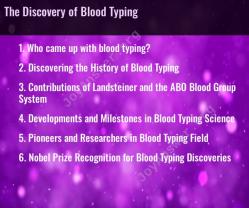What is the history of cardiac myxoma?
Cardiac myxoma is a rare type of primary heart tumor, and its history can be traced through medical literature and case reports. Here's an overview of the history and understanding of cardiac myxoma:
Discovery and Early Cases:
- The first documented case of cardiac myxoma dates back to the early 19th century. The term "myxoma" itself was introduced by German pathologist Karl von Rokitansky in 1845.
- Early cases were often discovered during autopsies, and the understanding of these tumors was limited.
Advancements in Diagnostic Techniques:
- With the advancement of medical imaging techniques in the 20th century, such as echocardiography and cardiac MRI, the ability to diagnose cardiac myxomas improved significantly.
- These non-invasive imaging tools allowed for the visualization of cardiac structures, making it easier to detect and characterize cardiac tumors.
Clinical Features and Symptoms:
- Cardiac myxomas were found to be the most common primary cardiac tumors in adults.
- The tumors are often located in the left atrium, attached to the interatrial septum, but they can occur in other parts of the heart.
- Symptoms can vary but may include dyspnea (shortness of breath), chest pain, fatigue, and symptoms of embolism if the tumor fragments break off and travel through the bloodstream.
Surgical Treatment and Outcomes:
- The primary treatment for cardiac myxomas is surgical removal. Open-heart surgery is typically performed to excise the tumor.
- With advancements in cardiac surgery techniques and perioperative care, the outcomes of surgical removal improved, and the prognosis became more favorable.
Genetic Connection:
- Some cases of cardiac myxoma are associated with a familial predisposition, particularly in the context of Carney complex, an inherited condition characterized by multiple tumors.
- Understanding the genetic basis of cardiac myxoma has led to insights into its pathogenesis.
Recurrence and Long-Term Follow-Up:
- Although cardiac myxomas are generally considered benign, there is a risk of recurrence after surgical removal.
- Long-term follow-up studies have contributed to our understanding of recurrence rates, outcomes, and the importance of ongoing monitoring.
Continued Research:
- Ongoing research is focused on understanding the molecular and genetic basis of cardiac myxomas, which may provide insights into targeted therapies or better risk stratification.
While cardiac myxomas remain relatively rare, advancements in medical knowledge, diagnostic tools, and surgical techniques have significantly improved our ability to diagnose and treat these tumors. Ongoing research continues to enhance our understanding of the pathophysiology and optimal management of cardiac myxomas.
Sure, here is a comprehensive overview of the historical background of cardiac myxoma:
1. Historical Background of Cardiac Myxoma
Cardiac myxoma is the most common primary benign tumor of the heart, accounting for approximately 50% of all primary cardiac tumors. It is a tumor of mesenchymal origin, typically arising from the endocardial lining of the atria, particularly the left atrium. Cardiac myxomas are characterized by their lobulated, gelatinous appearance and their tendency to attach to the atrial wall by a pedicle.
The earliest known description of cardiac myxoma dates back to the 16th century, when Italian physician Antonio Benivieni reported finding a "tumor of the heart" in a deceased patient. However, it was not until the 18th century that the term "myxoma" was first used to describe these tumors.
In the 19th century, advances in surgical techniques led to the first successful resections of cardiac myxomas. However, the mortality rate from surgery remained high, and the long-term prognosis for patients was poor.
The development of echocardiography in the 1950s revolutionized the diagnosis and management of cardiac myxoma. This non-invasive imaging modality allowed physicians to visualize the tumor in real time and accurately assess its size, location, and attachment.
In the 1960s and 1970s, the development of cardiopulmonary bypass further improved the safety and efficacy of cardiac myxoma resection. With the use of cardiopulmonary bypass, surgeons were able to operate on the heart for longer periods of time and with greater precision.
2. Evolution of Understanding and Treatment
The understanding and treatment of cardiac myxoma have evolved significantly over time. Early diagnosis and treatment have greatly improved patient outcomes.
Early Diagnosis: The development of echocardiography has led to earlier and more accurate diagnosis of cardiac myxoma. This has allowed for earlier intervention and improved patient outcomes.
Surgical Advances: Improvements in surgical techniques and the development of cardiopulmonary bypass have made cardiac myxoma resection a safer and more effective procedure.
Medical Management: In some cases, medical management with anticoagulants may be used to prevent embolic events.
3. Notable Milestones and Discoveries
1507: Antonio Benivieni describes a "tumor of the heart" in a deceased patient.
1840: Johannes Müller first uses the term "myxoma" to describe these tumors.
1950s: Echocardiography is developed, revolutionizing the diagnosis of cardiac myxoma.
1960s and 1970s: Cardiopulmonary bypass is developed, improving the safety and efficacy of cardiac myxoma resection.
1990s: Genetic studies identify the PRKAR1A gene as a cause of familial cardiac myxoma.
2000s: Minimal access surgery techniques are developed for cardiac myxoma resection.
Conclusion
Today, cardiac myxoma is considered a curable disease with a good prognosis. Early diagnosis and treatment are essential for optimal outcomes.



